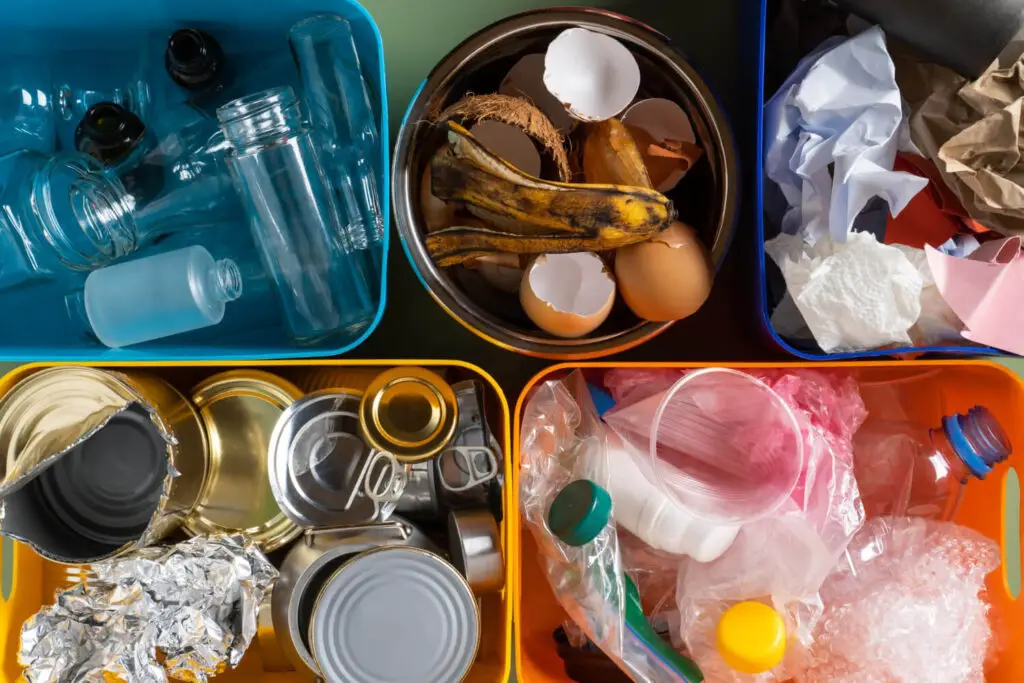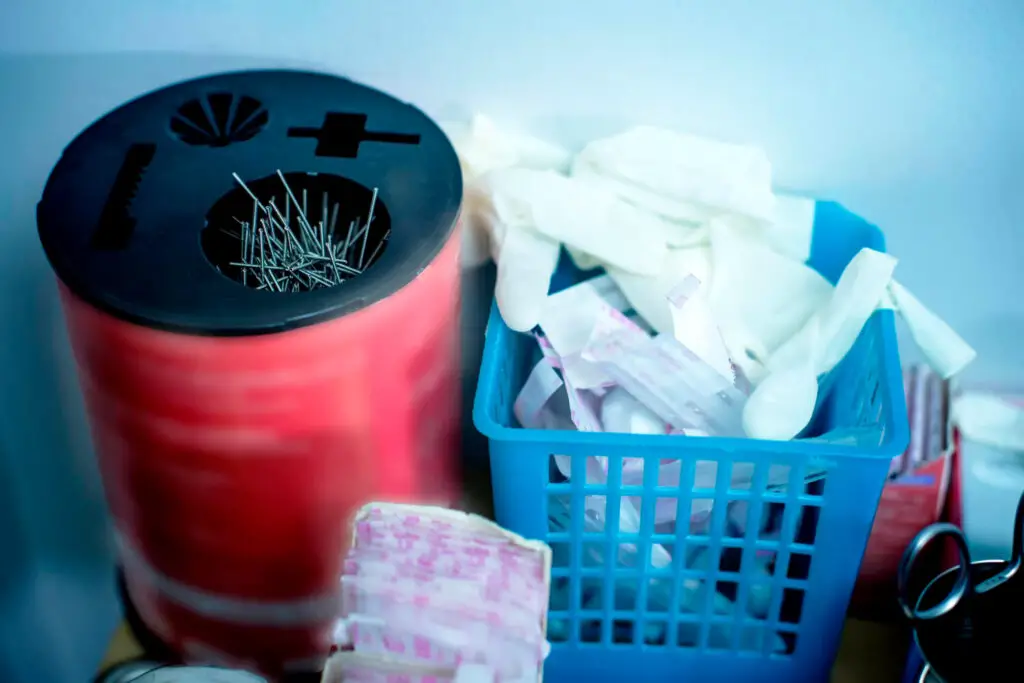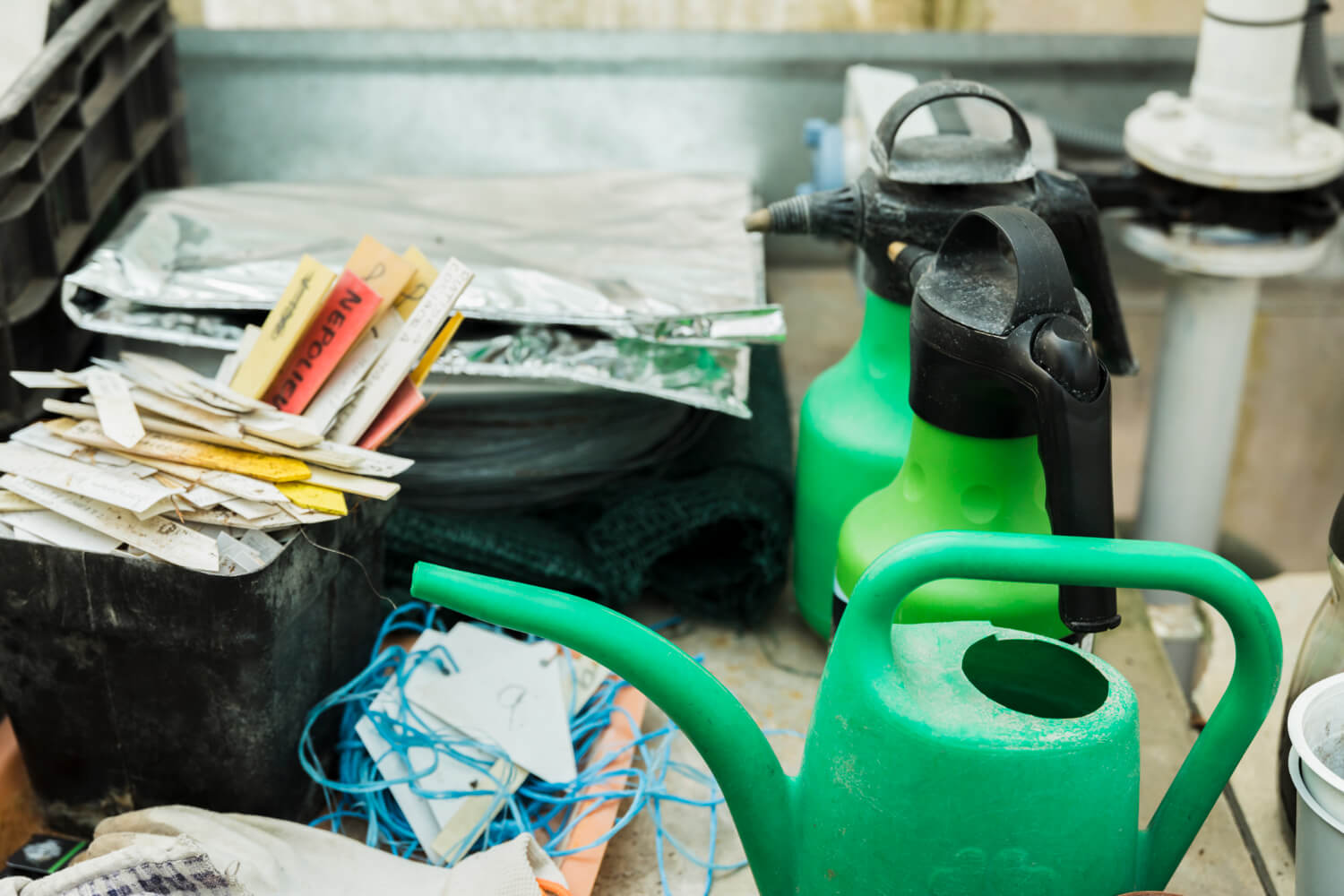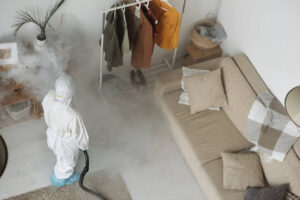Did you know that a single leftover can of paint, if poured down the drain, can contaminate up to 250,000 gallons of water, which is enough to fill nearly 400 bathtubs? Proper hazardous waste disposal and management is an eco-friendly habit and a legal and moral responsibility of every homeowner, as these materials can cause long-term environmental damage, health issues, and regulatory trouble without proper handling. This guide covers everything from identifying hazardous waste disposal methods and sustainable waste management practices at home.
Why Proper Disposal Matters
When we discuss hazardous waste, we first think of solvents, such as industrial chemicals or radioactive materials. However, hazardous waste is not limited to these products. Many household products can also be hazardous and harmful if they are not discarded appropriately.
Health and Environmental Risks
Household hazardous waste (HHW) commonly includes pesticides, paints, solvents, and some cleaning products that can contaminate soil and groundwater, posing a risk to both ecosystems and human health. According to the EPA, improper disposal of HHW can lead to respiratory illnesses, poisoning, and groundwater pollution. Children and pets are more vulnerable, as even low-level exposure over time can be toxic. Once these substances enter waterways, they can disrupt aquatic life and enter the food chain.
Legal and Financial Penalties
It is illegal to dump HHW in the trash or down the drain. Homeowners who violate these regulations may face fines or even civil penalties. Most municipalities and states have regulations that govern hazardous waste disposal. Complying with disposal laws helps you avoid liability while contributing to public safety.
What Qualifies as Household Hazardous Waste?
Not all waste is hazardous. Many everyday products become hazardous once they have expired, are damaged, or are misused. This section helps you identify them so you can avoid common disposal mistakes.

Common Household Items
Some of the most common HHW items you’ll find in homes include:
- Paint and paint thinner: Flammable and toxic. It should be taken to local HHW collection centers.
- Batteries (including rechargeable types): Corrosive and reactive. Many stores accept them for recycling.
- Pesticides and insecticides: These are toxic and harmful to both humans and animals. Dispose of them during official HHW events.
- Motor oil and automotive fluids: These are both flammable and toxic. Most auto parts stores have return programs.
- Household cleaning products: Especially corrosive drain cleaners and bleach. These should never be poured down the drain.
- Fluorescent bulbs: Contain mercury vapor. Must be returned to authorized retailers or recycling points.
- Nail polish remover: Contains acetone, a highly flammable chemical.
- Air fresheners and aerosol sprays: Often pressurized and combustible.
- Compact fluorescent lamps (CFLs): These contain trace mercury.
- E-waste like phones and tablets: Contain lithium-ion batteries, which can overheat or catch fire if improperly discarded.
Being aware of these items can prevent unintentional damage to your health and the environment.
How to Identify Hazardous Waste in Your Home
Most hazardous household products are labeled for safety. This section shows how to recognize the danger signs.
Reading Product Labels
Watch out for warning signs and keywords such as:
- “Toxic”
- “Flammable”
- “Corrosive”
- “Reactive”
- “Danger,” “Warning,” or “Caution”
Many products also include pictograms, like a skull and crossbones (toxicity), a flame (flammable), or an exploding symbol (reactive). These signals indicate that the contents need special disposal.

You should also watch out for products that are older or have expired. Some substances can become more volatile over time, or lose their packaging integrity and pose a greater risk of fumes, spills, or chemical reactions. If you are ever unsure, treat the product as hazardous.
Safe Storage Before You Dispose
If you’ve identified hazardous items, don’t rush to toss them out. Safe storage is key until proper disposal is possible. Start by keeping materials in their original containers. These are specifically designed to hold the product safely and often include hazard information. Never pour a hazardous liquid into a food container, even temporarily. Store these items in a cool, dry place away from sunlight, heat, or open flames. Ensure they’re kept upright and in a spot children and pets can’t reach. Avoid stacking or combining products. Some chemicals can react dangerously if mixed, even accidentally. For example, combining bleach and ammonia can release toxic chloramine gas.
Disposal Options for Homeowners
Properly disposing of hazardous waste protects you, your home, and the environment and is in line with most local regulations, though, as a homeowner, you have many proper disposal options, with most cities and towns providing options for you.
Local Collection Events and Drop-Off Centers
Many municipalities run hazardous waste collection days where you can drop off a range of items for safe processing. Others have permanent collection centers available year-round. You can usually find event dates and locations on your local government’s website or environmental department portal for proper waste management.
Retailer Return and Recycling Programs
Some stores and manufacturers offer take-back programs for specific products:
- Retail take-back programs often accept fluorescent bulbs, batteries, or used paint.
- Auto parts retailers take back motor oil and automotive batteries.
- Call2Recycle partners with retailers to collect rechargeable batteries and cell phones.
These programs are convenient and often free. They ensure that the hazardous materials are properly recycled or disposed of rather than ending up in landfills or drains.
What NOT to Do with Hazardous Waste
Hazardous waste produced in a household should be discarded appropriately. Improper disposal not only harms people and pets; it also affects the environment and contaminates the soil, air, and water. These wastes should be taken to designated collection centers so they can be discarded safely. Avoid these common and dangerous disposal mistakes:
- Never pour HHW down the drain: This contaminates septic systems and water sources.
- Don’t toss HHW in the trash: Landfills are not equipped to handle these materials.
- Avoid open burning: It releases toxic fumes like dioxins, furans, and heavy metals into the air.
If you’re unsure about what to do with something, hold on to it until you can confirm the safest disposal option.
Building Better Waste Habits at Home
Managing hazardous waste isn’t just about what happens at the end. The whole process starts with how you shop, organize, and educate the people around you.
- Separate your waste: Keep hazardous items away from regular trash and recycling. Designate a safe spot in your home for temporary storage and label it clearly.
- Talk to your household: Whether it’s your partner, kids, or roommates, make sure everyone knows the basics of identifying hazardous items and how to store them safely.
- Buy smarter: Reduce future waste by choosing non-toxic, biodegradable, refillable, or sustainable alternatives when possible. Buying smaller quantities also helps in purchasing what you’ll actually use.
These small actions create safer, cleaner households and contribute to a broader culture of environmental responsibility.
Final Thoughts
Safe hazardous waste disposal plays an important role in waste management, protecting our homes, our neighbors, and the environment. By learning how to identify, store, and dispose of dangerous materials correctly, you’re taking responsibility for your space and helping create a safer environment for everyone. Start with one habit: store chemicals safely, attend a drop-off day, or recycle that old battery. You’ll be surprised how naturally better waste practices follow. Because when every household does its part, the collective impact is powerful.






